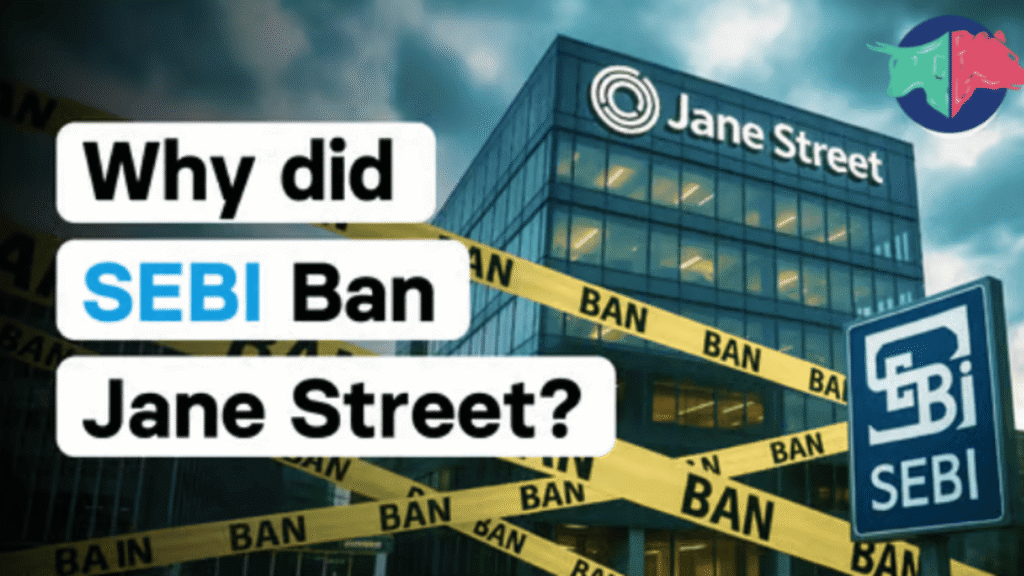Mutual Funds in India 2025, Complete Guide for Beginners & Investors

Mutual Fund Investing Made Easy: Top Funds, Tax Benefits & Growth Strategies by Gujju Traders Mutual funds are one of the most popular investment options in India. Whether you’re a beginner or an experienced investor, mutual funds provide a diversified, professionally managed, and growth-oriented way to build wealth. In this guide by Gujju Traders , we’ll cover: What is a Mutual Fund? A mutual fund is an investment pool where money from multiple investors is collected to invest in stocks, bonds, gold, or other financial instruments. Fund managers professionally manage these funds to maximize returns. Learn more about mutual funds: Moneycontrol Mutual Fund Guide Types of Mutual Funds in India Mutual funds can be classified as Equity, Debt, Hybrid, Index, ELSS (Tax Saving), Solution-Oriented, and Liquid Funds. Each type suits different goals and risk profiles. 1️⃣ Equity Mutual Funds – High Risk, High Return Equity funds primarily invest in company shares, suitable for long-term growth. Top 5 Equity Funds (1-Year Returns) Fund Name Returns Nippon India Small Cap Fund 58% Quant Small Cap Fund 54% HDFC Mid-Cap Opportunities Fund 45% SBI Large & Midcap Fund 39% ICICI Prudential Technology Fund 35% Recommended by Gujju Traders: 💡 Tip: Equity funds are best for investors with higher risk tolerance aiming for long-term growth. 2️⃣ Debt Mutual Funds – Low Risk, Stable Returns Debt funds invest in bonds and fixed income instruments, offering steady and safer returns. Top 5 Debt Funds (1-Year Returns) Fund Name Returns SBI Magnum Ultra Short Duration Fund 7.5% ICICI Prudential Corporate Bond Fund 7.2% HDFC Short Term Debt Fund 6.9% Nippon India Liquid Fund 6.8% Kotak Gilt Fund 6.5% More info: Economic Times Debt Fund Section 3️⃣ Hybrid Funds – Balanced Risk Hybrid funds invest in both equity and debt, offering moderate growth with stability. Top 5 Hybrid Funds (1-Year Returns) Fund Name Returns HDFC Hybrid Equity Fund 25% ICICI Prudential Equity & Debt Fund 23% SBI Equity Hybrid Fund 22% Mirae Asset Hybrid Equity Fund 21% Canara Robeco Equity Hybrid Fund 20% 💡 Tip: Hybrid funds are suitable for beginners who want exposure to equity without high risk. 4️⃣ Index Funds & ETFs – Market Trackers Index funds track indices like Nifty 50 or Sensex, offering low-cost, passive investment options. Top 5 Index Funds (1-Year Returns) Fund Name Returns HDFC Index Fund – Nifty 50 Plan 25% UTI Nifty 50 Index Fund 24% ICICI Prudential Nifty Next 50 Fund 23% Nippon India Sensex Index Fund 22% Motilal Oswal Nifty 500 Fund 22% External Reference: NSE India ETFs & Index Funds 5️⃣ ELSS Funds – Tax Saving + Growth Equity Linked Savings Schemes (ELSS) provide tax benefits under Section 80C. Lock-in is 3 years. Top 5 ELSS Funds (1-Year Returns) Fund Name Returns Quant ELSS Tax Saver Fund 47% SBI Long Term Equity Fund 36% Axis Long Term Equity Fund 30% HDFC Tax Saver Fund 29% ICICI Prudential ELSS Fund 27% 6️⃣ Solution-Oriented Funds – Goal-Based These funds are for long-term goals like retirement or child education. Top 5 Solution-Oriented Funds (1-Year Returns) Fund Name Returns HDFC Retirement Savings Fund 22% ICICI Prudential Retirement Fund 21% SBI Child Advantage Fund 20% Tata Retirement Savings Fund 19% UTI Children’s Career Fund 18% 7️⃣ Liquid & Overnight Funds – Safe Parking Invest in short-term instruments, safer than savings accounts. Top 5 Liquid Funds (1-Year Returns) Fund Name Returns HDFC Liquid Fund 6.7% Nippon India Liquid Fund 6.6% Kotak Overnight Fund 6.4% ICICI Prudential Overnight Fund 6.3% SBI Overnight Fund 6.2% Choosing the Right Mutual Fund Investor Type Best Fund Type Why? Beginner Hybrid / Index Funds Safe, easy to start Young (High Risk) Equity / Small Cap / Defence Funds High growth potential Retired / Conservative Debt / Liquid Funds Stability Salaried ELSS Funds Save tax + grow wealth Goal-Based Solution-Oriented Funds Retirement, Education Expert Recommendations by Gujju Traders Consulting At Gujju Traders Consulting, we recommend: 💡 Pro Tip: Personalized strategies based on risk, market trends, and goals can maximize returns. FAQs on Mutual Funds Which is the safest mutual fund in India?Liquid and Overnight funds are safest. Which mutual fund gives the highest returns?Small Cap and Sectoral Funds like Defence, IT, Pharma offer highest returns but carry risk. Can I save tax with mutual funds?Yes, ELSS funds provide tax benefits under Section 80C. How much should I invest?Start with SIPs of ₹500–₹1000/month. SIP or Lump Sum?SIPs are safer for beginners and help average out costs. Final Words Mutual funds are a powerful tool to grow wealth, save taxes, and achieve financial freedom. At Gujju Traders , we guide investors with smart strategies and recommend top-performing funds like HDFC Small Cap, HDFC Defence, and Motilal Oswal Defence Fund for strong growth over the next five years. Invest smartly with Gujju Traders and maximize your wealth in the coming years!
Silver’s Mega Rally: Why the Forgotten Metal is Poised to Outshine Gold

From Solar Panels to Central Bank Vaults ‘The Big Bull Case for Silver’s Bright Future’. Introduction – The Underdog Metal Ready to Shine For decades, silver has lived in the shadow of gold – often called “poor man’s gold.” But the tide is turning. In September 2025, silver is trading around $44 per ounce (₹1,42,000 per kg in India), showing signs of a historic breakout. Meanwhile, gold stands tall at $3,775 per ounce (₹7,20,000 per 10 grams in India). At Gujju Traders, we believe silver is gearing up for a long-term mega rally not just as a safe-haven metal but as an industrial powerhouse. Let’s break down why silver is set to shine brighter than ever. 1. The Gold vs Silver Ratio – The Hidden Key to Wealth One of the most powerful indicators in the metals market is the Gold-to-Silver Ratio (GSR) — how many ounces of silver are needed to buy one ounce of gold. 📌 Layman Explanation: Think of two friends — Gold (the star) and Silver (the quiet partner). For years, silver has been undervalued compared to gold. When the balance corrects, silver doesn’t just walk — it sprints. This mispricing is one of the biggest bullish signals today. Every time the ratio narrows, silver rallies massively, as seen in the 1970s bull run and the 2011 rally when silver touched $50. 2. Central Banks and Silver Shortage – The Sleeping Giant Traditionally, central banks only stocked gold. But now, there are discussions of central banks planning to take physical delivery of silver due to growing shortages. If central banks enter the silver market even slightly, the demand shock could skyrocket prices. 📌 Layman Analogy: Imagine if the RBI and Federal Reserve suddenly started buying onions during shortage season. Prices would go crazy. That’s the kind of wave silver could face. 3. Silver in Solar Energy – The Green Gold Rush 🌞 Silver isn’t just about jewelry or coins it’s the heart of the solar revolution. 👉 This means millions of panels = thousands of tonnes of silver demand. 📌 Layman View: Every time you see a new solar park, remember it’s literally built on silver. 4. Silver in Semiconductors – Powering the Tech World ⚡ Silver is the best conductor of electricity, making it critical for: Demand from these sectors is growing exponentially. As technology expands, silver’s industrial role becomes irreplaceable. 5. The Silver Deficit – Supply Can’t Keep Up For the past five consecutive years, silver has been in a supply deficit — meaning global demand exceeds mine supply. 📌 Layman Analogy: It’s like having a fridge that stocks 10 bottles of water daily but the family consumes 15. Slowly, the shortage builds up. That’s silver today. 6. Price Outlook – The Road Ahead 🚀 Given all these factors, Gujju Traders projects the following possible targets: This aligns with silver’s historical surges after long consolidation periods. 7. Why Silver Could Outperform Gold While gold will remain a safe-haven king, silver has a dual advantage: That’s why silver could rally sharper and faster than gold in the coming years. Conclusion – Gujju Traders View At Gujju Traders, we believe silver is not just a metal – it’s a mega opportunity. The gold-silver ratio imbalance, solar and tech demand, central bank interest, and ongoing supply deficits all point toward a historic bull run. ✨ Punch Line: “Silver isn’t just shining it’s blazing the path to the future.” Investors who recognize this trend early could ride one of the biggest wealth-creation waves of this decade. Gujju Traders Research Team
Rs 43,289 Crore Gameplan: How Jane Street Tried to Hijack India’s Derivatives Market

Rs 43,289 Crore Gameplan: How Jane Street Tried to Hijack India’s Derivatives Market Page 1: Executive Summary Between January 2023 and March 2025, U.S.-based quantitative trading firm Jane Street Capital manipulated India’s index derivatives market by inflating and crashing prices of Nifty and Bank Nifty through sophisticated algorithmic expiry-day strategies. SEBI’s July 4, 2025, order bans Jane Street and its Indian trading entities (JSATL, JSITPL, JSALLC) and demands the return of Rs 4,843.81 crore in gains, making this the most significant regulatory crackdown in Indian market history. Page 2: Introduction to Jane Street and its India Presence Jane Street is globally known for high-frequency trading (HFT) and proprietary quantitative models. Its India-linked FPIs used powerful co-located servers and AI-driven strategies to exploit expiry-day weaknesses in India’s derivatives market. The firm operated silently through: These entities used vast financial muscle and ultra-fast servers to dominate expiry-day volumes, especially in Bank Nifty options. Page 3: SEBI’s Crackdown – Timeline and Action SEBI Statement: “This case threatens the foundational integrity of price discovery.” Page 4: The Master Trick: Expiry-Day Pump and Crash Jane Street played a high-stakes game of pump-and-dump on expiry days: This trick trapped retail call buyers and gave them massive gains from crashing premiums. Infographic Suggestion: A timeline flowchart showing early stock spike (9:30 AM), OTM call premium spike (11:00 AM), and steep index drop (2:45 PM). Page 5: Mirror Trading Exposed Jane Street used mirror trading to build fake volume and influence prices: Infographic Suggestion: Split-screen graphic showing two FPI accounts placing buy/sell orders at the same timestamp with matching prices and volumes. Page 6: Impacted Stocks and Their Use in Manipulation Stock Manipulation Method Result HDFC Bank Pumped in early trades Index push ICICI Bank Volume game at open OI build-up SBI Spike before reversal Bank Nifty support Axis Bank Short build-up Triggered panic fall Kotak Bank Used for intraday reversals Retail trapped IndusInd Bank Fast rise & fall Stop-loss hunting Page 7: Affected Broking and Financial Stocks The scam may hurt revenue of broking companies: Stock Impact Zerodha (unlisted) Loss of retail trust, lower expiry trades Angel One Drop in options turnover volume ICICI Securities Derivative volume cutbacks IIFL Securities Revenue hit from lower active traders 5paisa Capital Reduced expiry-day engagement Investors are now shying away from high-risk expiry trades, hurting brokers’ earnings. Infographic Suggestion: Bar graph showing drop in expiry-day retail trades from Jan 2024 to July 2025. Page 8: Financial Impact Breakdown Metric Value Total Profit Rs 43,289 Cr Gains Frozen Rs 4,843.81 Cr Losses in Cash Segment Rs 7,687 Cr Retail Loss Ratio 90-93% Daily Profits (Avg) Rs 40-50 Cr on expiry Page 9: Timeline of Major Expiry Manipulations Page 10: Public Impact and Retail Reaction Infographic Suggestion: Pie chart comparing pre- and post-ban retail participation in Bank Nifty options. Page 11: How SEBI Detected the Scam Page 12: Understanding Mirror Trading for Beginners Mirror Trading = Buy & sell same stock at same price, time, and volume using two separate accounts (but same owner). Used to: Jane Street mastered this with ultra-speed bots. Page 13: Why Bank Nifty was the Target Jane Street could control 40-50% of expiry-day volume using this strategy. Page 14: Regulatory Loopholes Used Page 15: Reactions from Experts Page 16: Global Comparisons Page 17: What Happens Next Page 18: Advice for Retail Investors Page 19: Gujju Traders Warnings Page 20: Conclusion and Final Punchline The Jane Street case exposes the vulnerabilities of India’s retail-dominated expiry-day trading culture. However, SEBI’s strong action is a message to all global manipulators – India is no longer a playground for rigged trades. “Expiry ka Sikka, Retail ka Jhatka – Jab Jane Street Ne Khela Crorepati Ka Khel!” Stay Smart. Stay Informed. Follow Gujju Traders.
Bondada Engineering’s ₹9,000 Crore Solar Leap: A Defining Moment for India’s Infrastructure Ambitions

“Aa deal chhe historic, Bondada banse next iconic!”
